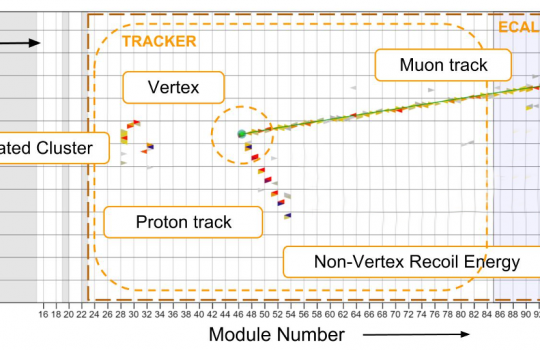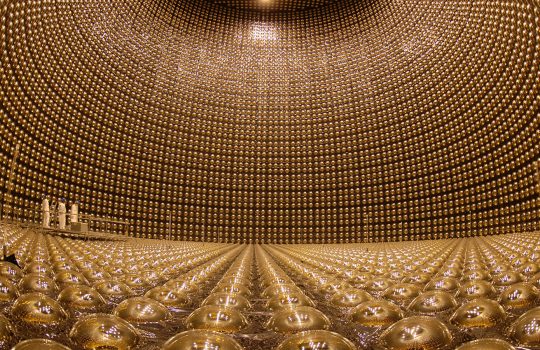Playing pool with neutrinos
Hard to believe you can play pool with neutrinos, but certain neutrino events are closer to the game than you think. These special interactions involve a neutrino — famously elusive — striking a particle inside a nucleus like a billiard ball. MINERvA scientists study the dynamics of this subatomic ricochet to learn about the neutrino that triggered the collision. Now they have measured the probability of these quasielastic interactions using Fermilab’s medium-energy neutrino beam. Such measurements are important for current and future neutrino experiments.


